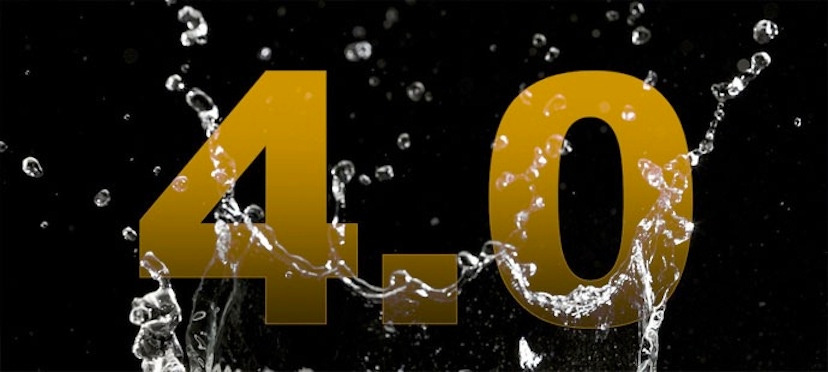Some pundits say the MSP 2.0 wave is coming. MSPmentor thinks it's long gone. Instead, look ahead to the fast-approaching MSP 4.0 wave. What comes after cloud and mobile services? Here are predictions.

Pundits tell me the next managed services wave (which they call MSP 2.0) is coming. My reaction? MSP 2.0 happened around 2007. In reality, we’re moving onto MSP 4.0. And savvy managed services providers (MSPs) better get a grip on The Internet of Things (IoT), Big Data and end-user experience. But that’s not all.
Here’s a look back and ahead at each MSP wave. It’s difficult to organize the trends into neatly tied categories but here’s an attempt…
MSP 1.0: 1995-2000
The best resellers and VARs shift from product reselling to IT solutions.
A small portion of those IT solutions providers seek to develop even more predictable revenue streams. But how?
Cable companies and phone companies sure have nice recurring revenue models. Early MSPs attempt to emulate the model.
Home-grown tools to manage VAR businesses emerge.
The ASP (Application Service Provider) boom and bust leaves a lasting impact, making some MSPs initially doubt the cloud wave that will emerge in five to seven years.
MSP 2.0: 2001 to 2007
Purpose-built tools emerge in areas like RMM (remote monitoring and management) and PSA (professional services automation).
The two areas nearly come together multime times. PSA and RMM companies consider buying each other but no real deals emerge.
At least one RMM provider considers building a PSA platform based on SugarCRM, the open source CRM platform. The R&D project never launches.
Microsoft delivers Windows Vista to usher in the next wave of IT and channel profits. Apple, meanwhile, delivers something called the iPhone. It’s really expensive and will never sell, nor will corporate IT support it. Never. Um… nevermind.
Per-device MSP pricing models begin to emerge.
Peter Sandiford (CEO of Level Platforms at the time) blogs about the MSP 2.0 wave. Separately, Bob Godgart (CEO of Autotask at the time) offers his MSP 2.0 thoughts.
MSP 3.0: 2008-2013
Despite the global financial market meltdown, many MSPs remain standing and grow, according to the first-ever MSPmentor 100 report (now the MSPmentor 501).
Peer groups help MSPs to maximize profits while learning from non-competing executives.
Apple delivers a really big iPhone called the iPad. Google dabbles in something called Android. Big tablets without keyboards will never take off in business. Windows Vista is Microsoft’s fastest-selling operating system launch ever. Really. Truly. Um… nevermind.
Forget applications. It’s all about apps.
APIs create solid links between PSA and RMM. ConnectWise goes one step further, investing in LabTech Software
Major MSP software providers including Kaseya, Zyrion, Continuum, Level Platforms and N-able Technologies get acquired.
All-in pricing (the Chocolate Cake model, as explained by TruMethods CEO Gary Pica) emerges.
A shift from per-device to per-user pricing emerges and accelerates in many areas.
Mobile Device Management emerges but few MSPs initially cash in.
Deliver a great “end-user experience” becomes the MSP battle cry.
Many cloud services go mainstream. Yes, Amazon Web Services is for real.
Cloud-based backup and disaster recovery (BDR) goes mainstream for MSPs.
MSP 4.0: 2014 and Beyond
MSPs manage and optimize customer applications regardless of location — on-premises, in the MSP data center or in a third-party cloud like Amazon, Azure and more.
Most MSPs abandon plans to build their own data centers. Why create your own power plant when the cloud grid — Amazon, Google, Rackspace, Microsoft, ViaWest, Savvis, SoftLayer and more — deliver plenty of power for MSPs to plug into?
The “dream” of building and selling a very high value MSP dies for many companies because most MSPs do not have their own intellectual property. Still, smart MSPs seeking an exit can fetch a price premium — especially those that have vertical market and compliance expertise.
MSPs add cloud broker services, helping to source, integrate and optimize multiple SaaS apps for customers. To do this, you’re going to need a Cloud Aggregator Service from a SaaS distributor. Early names like Ingram Micro Cloud, SaaSMAX and Excel Micro come to mind. More will emerge at IT Nation.
MSPs finally begin to monetize Big Data applications and services like Hadoop and NoSQL.
Some MSPs focus mainly on end-users. Others shift in the complete opposite direction, managing the Internet of Things (Machine to Machine computing, or M2M) and network sensors. If a device is IP-enabled, there’s an opportunity for MSP monetization.
MSP 5.0
Too soon to say. Especially since the dinner bell is ringing here at home. That’s all for now.
About the Author(s)
You May Also Like


